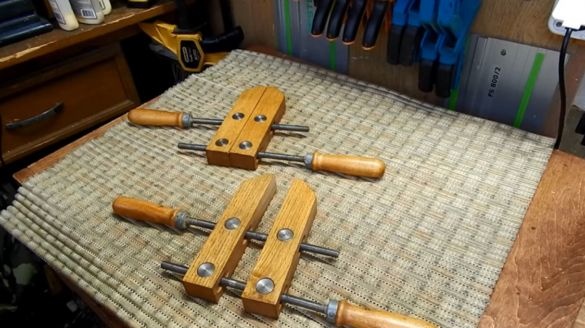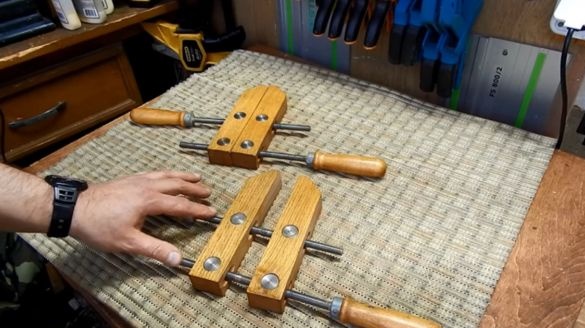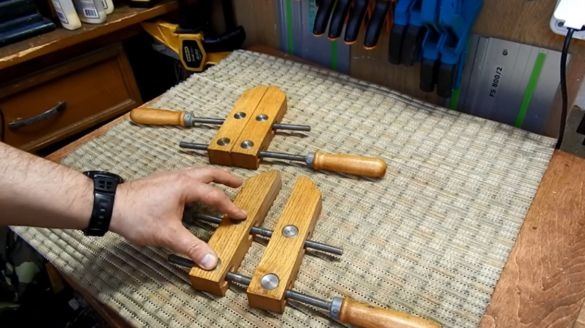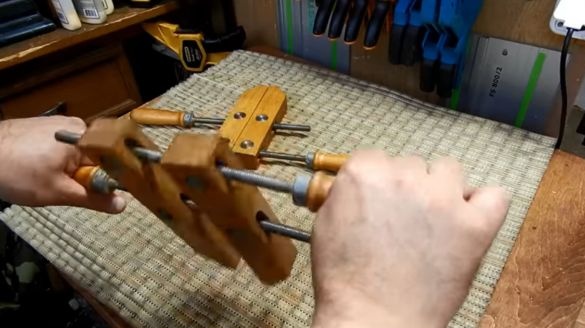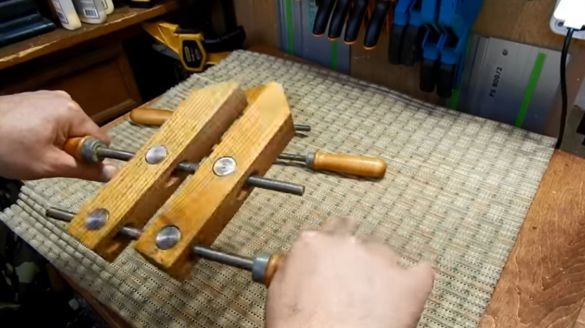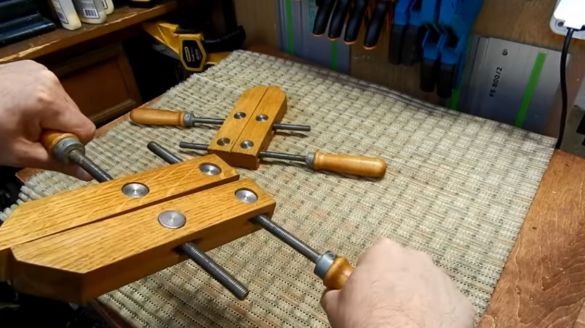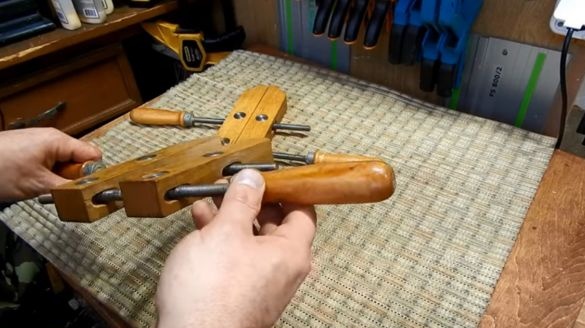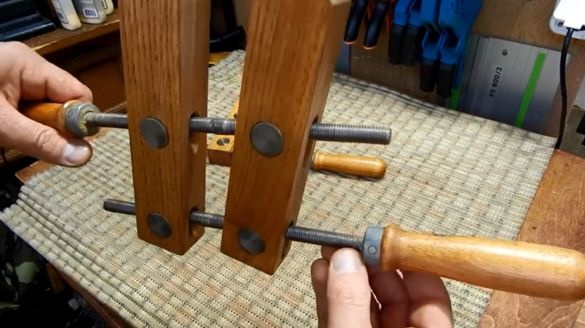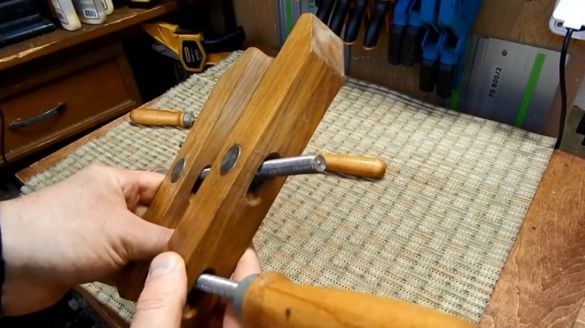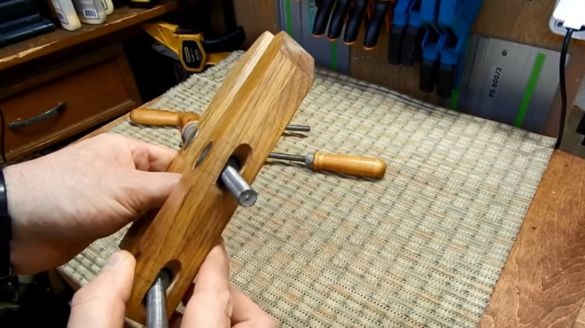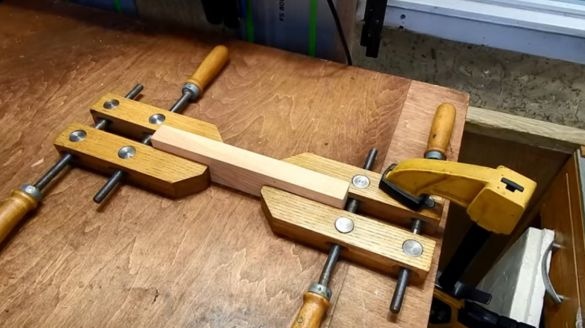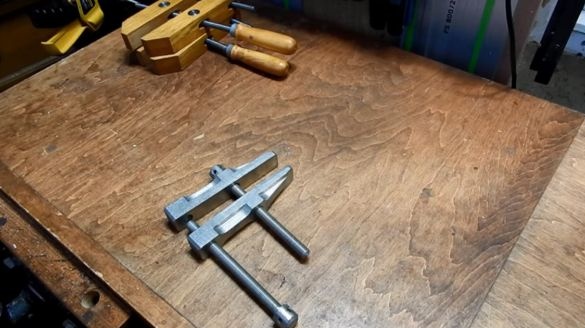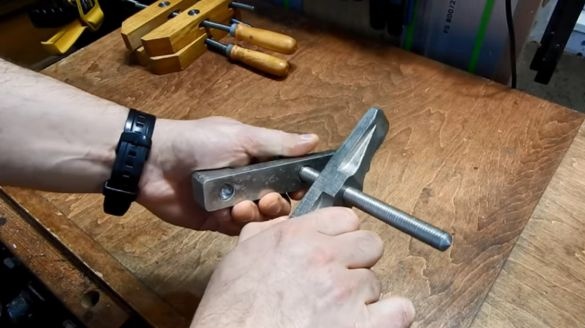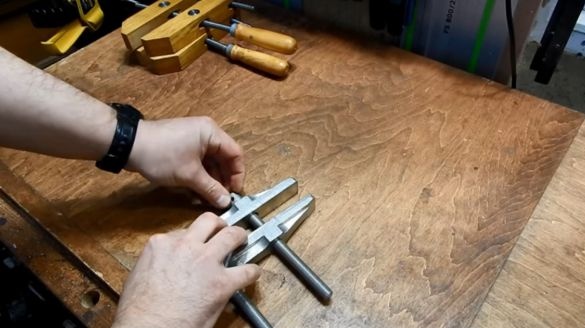In this article, Andrei Yarmolkevich welcomes you to his small workshop on the balcony.
In today's article, at the request of viewers, Andrei was asked to remove about these homemade clamps.
He made them seven or eight years ago. They are made, in principle, not very difficult.
But there are certain nuances about which the author would like to tell. These clamps consist of two sponges. These sponges are made of parquet dies glued together, two studs with handles and four nuts. The peculiarity of these clamps is that, but these threaded studs are cut into multidirectional threads.
On this side, the left-hand thread is cut. Here are these left-handed nuts.
The right-hand thread is cut from the second side, and the nuts, respectively, are right-handed.
Thanks to this, the mixing and breeding of sponges is doubled.
This is done very simply. In my left hand I take this hairpin, which passes through the middle of the lips, as it were. He takes the second hairpin in his right hand and starts to rotate.
If you twist like this, then the lips converge. If it starts to twist in the opposite direction, these sponges diverge.
And all this happens rather quickly.
When the author made these clamps, he only had a metal lathe. The author did not grow together with Minsk free turners who work on ads. As a result, Andrey bought a metal lathe as a result.
The turning appeared earlier than on wood, so these handles are the usual handles for files from the store.
So they drilled holes through them and hammered the pins, the pins - loudly said, ordinary nails.
All this is planted on epoxy. In principle, the clamps work very well.
The second point is that the grooves are made here.
That is, here all this can go quite freely. Maybe the author made too much freedom in the manufacture, and they hang out like that, but it doesn’t cause much inconvenience.
The studs are 10 millimeters in diameter. The most difficult thing was to find left taps and dies.
The goods, as it turned out, are quite scarce.When threading, it must be borne in mind that the threaded part will go into the handle, so you should not divide in half, but with a certain allowance.
Since it is possible to adjust the clamps here and here, it is possible to set the lips when clamping in parallel with one another. Not all conventional clamps allow this.
Again, in combination with ordinary clamps, you can quite well fix some kind of bars and boards there on ordinary smooth surfaces. That is, you do not need a workbench for this. This is sometimes useful.
Now a few words about manufacturing. The main problem is to grind the rods to such a diameter that the threads can be cut. Andrei does not know how to do this without a metal lathe. All other parts, in principle, can be done without turning.
There are clamps very similar to those that the author showed. They carry the same functionality, but are simpler. And they work worse.
This clamp was acquired on the Minsk field of miracles many years ago.
So how it works. Threads are cut in one sponge. One through hole is drilled in the second sponge. The other is not cross-cutting.
Accordingly, this pin rests here. And the screw head is attracted, and the clamp converges.
That's all, thanks to Andrey Yarmolkevich, the author of the channel of the same name, for the interesting tool presented.
Good luck to all!

